Bonxie and I (an encounter with Stercorarius Skua)
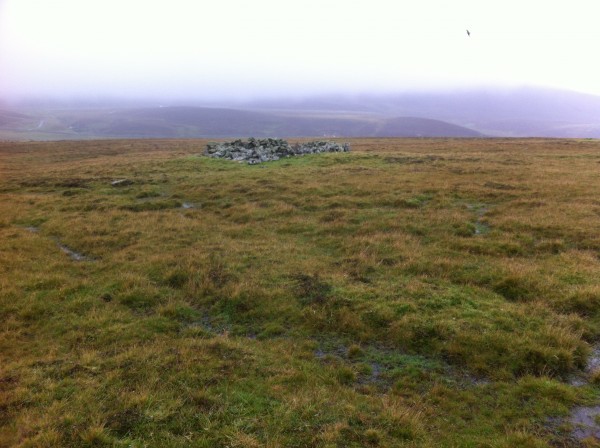
Unedited field recording. Equipment: Tascam DR-07, Sennheiser K6/ME66, Røde WS6
On this misty, late morning the cloud was low, the atmosphere thick, drizzly and heavy with moisture. Alone, I took a walk from the pier at North Haven (East side of the island), past the Bird Observatory, and up across to the boggy, windswept moorland area locally known as Vaasetter. To the South East, this sweeping expanse of land suddenly ends: the cliffs plunge to the sea. Vaasetter is an edge and this is where I was, just a few hundred yards from the cliffs overlooking the iconic Sheep Rock.
Mindful that I was merely a visitor, I moved as quietly and as lightly as I could. I found a place to sit and rest. It felt right: a ruined stone wall structure, probably an old sheepfold. I sat inside the square tumble of stones and listened, carefully. After a few minutes I began to realise that I was sitting in the middle of a Bonxie stronghold. I think I was more wary of them, rather than them being wary of me. I suspect they just found me to be an irritating intrusion.
The Great Skua (Stercorarius skua) is commonly known to the islanders by the nickname, Bonxie (of Norse origin). For the two days we were on Fair Isle, I affectionately referred to this species of sea bird with the extended nickname – Grumpy Bonxie.
The local Grumpy Bonxie and I had ‘an encounter’ – a rather special one, from my point-of-view. It was chilly and I was wearing a wooly hat mainly because I have very little hair remaining on the top of my head. However despite my head being covered, I was still concerned that the unfortunate combination of a large, grumpy, dive-bombing bird and my hairless scalp was a rather frightening and potentially dangerous scenario. Although no direct physical contact between us was made, our meeting will be one of my enduring memories of Fair Isle. Needless to say, I hold the Bonxie in great esteem.
The Bonxie is very territorial indeed, and hostile to intruders. From wintering on the Western coasts of Spain and Africa it migrates North and predominantly settles to breed during the summer months in the grassy and moorland habitats of the Orkney and Shetland Isles. Each pair usually takes possession of a mound or hillock, from which they can obtain a wide field of vision. This is their patch. You will know when you cross the invisible threshold. I certainly found this out.
Interestingly the International Union for Conservation of Nature currently classifies the Great Skua as ‘least concern’ on its Red List of Threatened Species. So, you might wonder why I’ve decided to tell a story about such a common species? I suppose the simple analogy of the Great Skua’s survival and the Human’s survival compels me to wonder: both species are being pushed to the edge and doing whatever it takes to live. However a difference (in this Anthropocene age) is that the Human is the prime creator of this edge – accelerating and pushing at the finite Gaian limits. Like all life on Earth, the Bonxie is at the mercy of this.
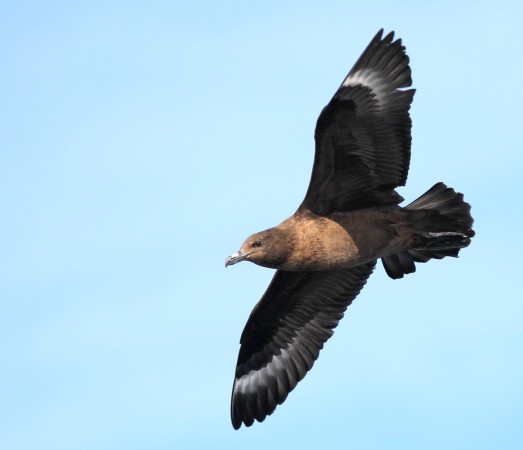
The Bonxie has predatory behavior and (from our perspective) is a thief and a pirate. This bird is a bully, chasing Gannets and gulls, hassling them to disgorge the fish they’ve caught. Bonxie also kill small seabirds (such as puffins – an easy target) and sucks eggs for food. Of course, these behavioral characteristics (by definition) don’t really intrinsically exist in the world of birds: only the Human attributes them from its own conscious experience. Birds just do bird things. They have no care for, or need for definitions.
From an evolutionary perspective this particular sea bird may seem to be resourceful, smart, opportunistic, successful and thus, at the top of its game: a prime example of Natural Selection. Does this all sound familiar, like another species we know? Although, the paradox is that in strength comes weakness and inevitable vulnerability, doesn’t it? We know that. Right now it is common and numerous, but I wonder actually how resilient and adaptable the Bonxie is as a species in the long-term?
Now, I’m no ornithologist or ecologist; I only have my own speculative curiosity and questions. Maybe a reason for its predatory feeding behaviour (in relation to other birds) is mainly a symptom of environmental and ecological changes? Has the Bonxie always been a pirate, or has it quickly evolved this way as its marine food source (fish) is pushed further to the edges, further away from its land breeding areas? And, what about the Gannets and Puffins? What happens when they become scarce? Then, how soon before the Bonxie eventually becomes endangered and extinct on the Northern Isles? Only time will tell.
Sea ice is melting at an unprecedented rate, seas are warming, affecting sand eel population, pushing mackerel migration further out West and with this, hugely unsustainable commercial-scale fishing is shifting the trophic balance, etc. etc. Everything is affected – symbiotic. It’s ecology and it’s complex. These few interconnected occurrences I have identified here are really only a tiny part of the story – just the tip of the iceberg . Yes, pun intended.
Whilst I was sat almost alone in the mist and drizzle, being dive-bombed by the Grumpy Bonxie, I wondered if there were lessons or morals to be learned from the encounter and subsequently from the story I would write? I’m still not sure. I’m still trying to make sense of all this. Aren’t we all?
Epilogue:
Ian, a core crew member of The Swan (he’s a retired ferry engineer), a day-or-so before, explained to me how, within his lifetime, the ‘sound of the seasons’ has changed. In particular he referred to the shifting presence of the sea birds at different times throughout the year. The decline of the Arctic Tern is a timey example. I sensed sadness in the story that Ian told.



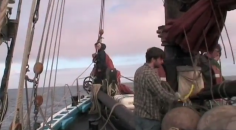
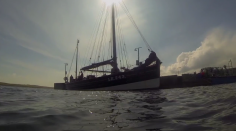

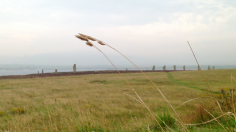
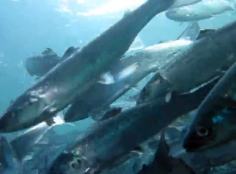
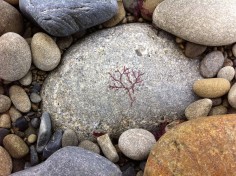
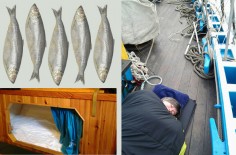


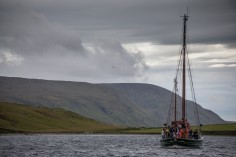







No Comments